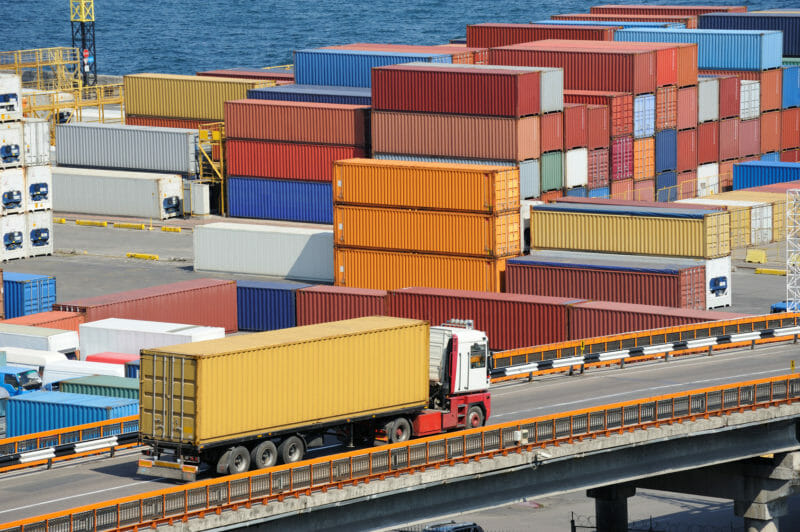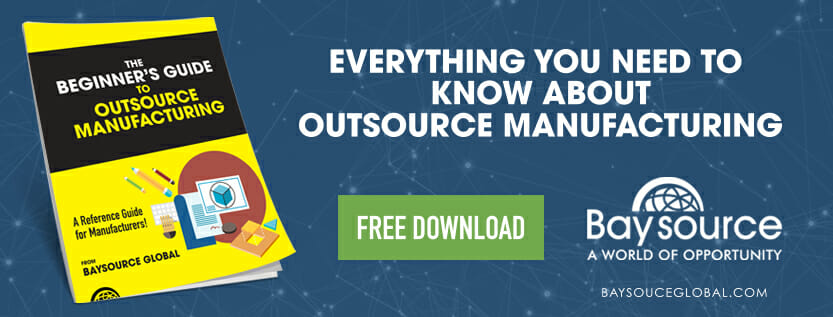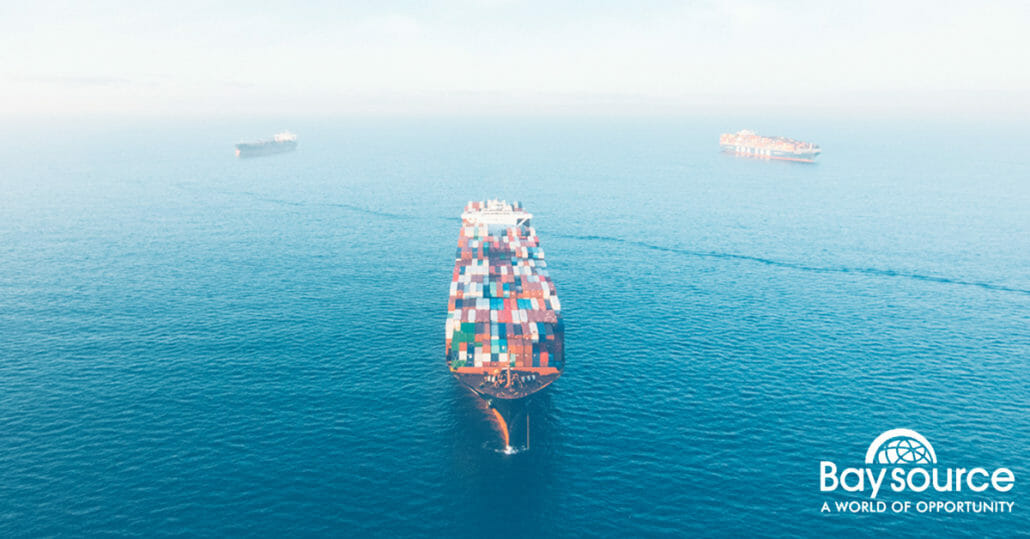How to Ship from Chinese Manufacturers to Your Market
In many cases China product sourcing is an excellent cost optimization strategy for small and medium size businesses. However, it’s a complex endeavor that requires the experience and resources of a proven project manager.
Even after navigating through the product development, suppler qualification, and manufacturing processes, there remains an entire global logistical network products must pass through to reach their destination market. To ensure goods arrive undamaged and within budget while meeting expected lead times, it’s worthwhile for every product manager to understand the fundamentals of how to ship goods from China.
There’s an array of international shipping methods for manufactured goods. Options vary in terms of transit times and freight charges and choices range from post and courier to air and sea shipping. Sea freight containers are the most commonly used shipping method for both consumer and industrial products outsourced in China. For this reason, we’ll focus on understanding the process of getting your products from the Chinese factory production floor to the hands of your customers utilizing a sea freight shipping process.
Managing the Freight Process: Selecting a Freight Forwarder vs. Supplier
In the world of international trade and logistics, there are three main options to determine how your freight will be managed and will affect the shipping rates from China to the U.S.:
1. D.I.Y. – Manage Your Own Freight for Full Control
New to novice-level importers typically choose this freight management process. The pro to this option is that all you have to do is instruct the supplier to ship cargo as CIF “Port of Destination” or DAP “Your facility Address”. The con to this option is that you may have to pay more than necessary and there are other options available that will save time and money.
2. Work with a U.S. Freight Forwarder
This is the most convenient option for U.S. companies that outsource manufacture to China. Companies also tend to prefer the idea of working with a freight forwarder that’s based on their home turf for extra piece of mind, more transparency, and faster communication. When choosing this selection, try to find a freight forwarder who takes a vested interest in your business and cares about your products. It’s important to note that not all freight forwarders have a China office. Many U.S. freight forwarders work with local agents in China, adding a margin on top of the agent’s fee. The downside of working with some U.S. freight forwarders is they have a tendency to be more expensive.
3. Work with a Chinese Freight Forwarder
The biggest benefactor of working with a Chinese freight forwarder is they are within the closest proximity to suppliers and should trouble surface, can most expediently react to and solve problems. Rates may also be more affordable with a Chinese freight forwarder, but the pace of communication and degree of transparency between the client and forwarder may not be as great.
Define Incoterms
Short for “International Commercial Terms”, incoterms are standardized shipping codes used in international trade that define shipping responsibilities and who assumes risk (liability) for certain actions between suppliers and importers. It’s important to understand these codes to avoid surprise expenses or, worst case scenario, losing goods in transit. These three letter codes specify to what extent the supplier is responsible for goods throughout global transit and to what destination the goods will be shipped. Depending on the incoterm, manufactured goods may only be shipped to a nearby port from the manufacturer’s factory or all the way to the warehouse where your company’s goods are stored. Below, are some of the most common incoterms used within sea freight shipping.
1. FOB (Freight on Board)
The shipper/seller is responsible for transporting goods from its place of origin and having the goods loaded onto the vessel at the container port. Once loaded onto the China shipping container, the risk of loss or damage transfers from the to the importer/buyer. From this point on, the importer is responsible for all insurance and transportation costs. It will also be the importer’s responsibility to ensure goods clear United States customs. This method is known to be one of the cheapest ways to ship from China to the USA.
2. CIF (Cost Insurance Freight)
The shipper/seller is responsible for the transportation of goods from the place of origin to the port of destination. The supplier is also responsible for purchasing insurance on behalf of the importer/buyer. However, once loaded onto the vessel, the importer/buyer will assume any risk of damaged or loss goods and will need to file an insurance claim in such a case. Here too, the importer is responsible for ensuring goods clear through U.S. customs.
3. CFR (Cost and Freight)
The shipper/seller is responsible for transportation of goods to the port of destination along with all associated costs. Liability is transferred to the importer/buyer once goods are placed on board the vessel. The importer/buyer is responsible for payment of port handling costs at the port of destination and land or rail transportation to the destination warehouse.

Selecting Container Options
1. FCL and LCL
There are two container options for U.S. businesses importing their manufactured products from overseas. For businesses manufacturing about 12 or more pallets of product, FCL (Full Container Load) is the best choice. FCL is the most cost effective container choice and is calculated by the cost per volume metric and unit weight. Full containers come in 20 ft, 40 ft, and 40 foot high variations. For businesses importing smaller volumes of goods, LCL (Less than Container Load) is the alternative solution. LCL is shared container freight where several buyers store their goods in a single container. Although LCL is a great option for the smallest businesses, the downside is the cost is higher per volumetric. Shipping administrative fees are factored into the cost of each container and those costs are fixed per consignee.
2. Shipping Lead Times by Region
How long it takes to ship from China to the United States may vary slightly depending on the destination port. West coast cities such as Los Angeles, Oakland, and Portland have an approximate lead time of 20 days. East coast cities such as Miami, Jacksonville, Baltimore and New Jersey have lead times of approximately 30 days. It’s doesn’t happen often, but there may be a scenario where there’s an issue with a container ship after it has left the port of origin. In a cumbersome situation such as this, another 10 – 15 days may need to be added to the lead time. NOTE: It is in these cases that a freight forwarder can be quite helpful.
Arrival at Port of Destination and Customs Clearance
Consignees are notified of a shipment’s arrival 3-5 days before in advance. After the containers arrive at the port of destination the consignee is responsible for arranging customs clearance, payment of duties, taxes, and other applicable fees.
Receiving your Manufactured Goods
In this final stage pick up from the port of destination to the destination city will need to be arranged. Drayage, or over land trucking is often a separate charge but can also be included.
When pursuing an outsource manufacturing strategy be sure to invest time to gain an overall understanding how goods are shipped from China to the United States. Familiarizing oneself with the fundamentals of international shipments now will make it easier to avoid miscommunication, acquire the most cost effective shipping rates, and obtain products within expected lead times.
Interested in learning more about outsourcing manufacturing? Be sure to check out the Beginner’s Guide to Outsource Manufacturing to see if it’s the right strategy for your business.

[Download] Beginner's Guide to Outsource Manufacturing



Follow Us